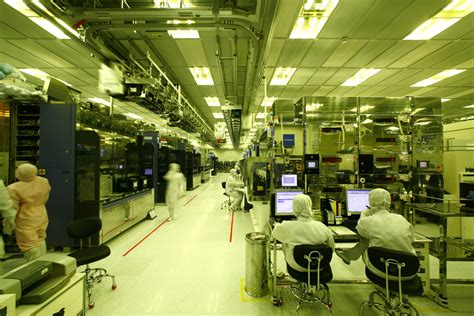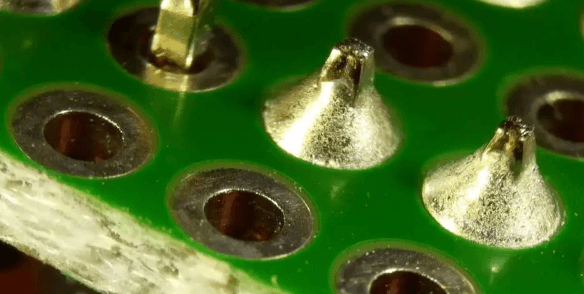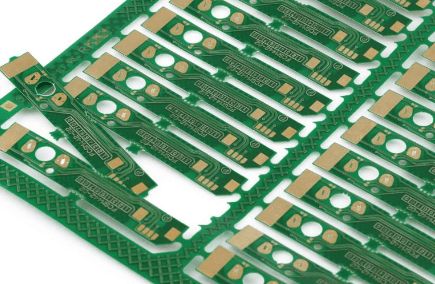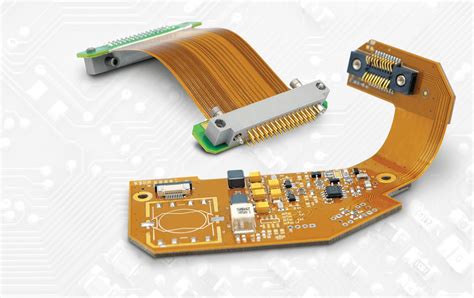China pcb metal core
Advantages Of Using Metal Core PCBs In China’s Electronics Industry
In the rapidly evolving landscape of China’s electronics industry, the adoption of metal core printed circuit boards (PCBs) has emerged as a significant advancement, offering numerous advantages that cater to the sector’s growing demands. As the industry continues to expand, driven by the increasing need for high-performance electronic devices, the integration of metal core PCBs has become a pivotal factor in enhancing the efficiency and reliability of electronic products. This shift is largely attributed to the unique properties and benefits that metal core PCBs bring to the table, setting them apart from traditional PCB materials.
One of the primary advantages of using metal core PCBs in China’s electronics industry is their superior thermal management capabilities.
Unlike conventional PCBs, which often struggle with heat dissipation, metal core PCBs are designed to efficiently conduct heat away from critical components. This is particularly crucial in high-power applications where excessive heat can lead to component failure or reduced performance. By incorporating a metal core, typically made of aluminum or copper, these PCBs ensure that heat is effectively dissipated, thereby enhancing the longevity and reliability of electronic devices. This capability is especially beneficial in sectors such as LED lighting, automotive electronics, and power supplies, where thermal management is a critical concern.
Moreover, the mechanical stability offered by metal core PCBs is another compelling advantage.
The robust nature of the metal core provides enhanced structural integrity, making these PCBs less susceptible to mechanical stress and deformation. This is particularly advantageous in applications that require durability and resilience, such as industrial machinery and automotive systems. The ability to withstand harsh environmental conditions without compromising performance is a key factor that has driven the adoption of metal core PCBs in various high-stakes applications within China’s electronics industry.
In addition to thermal and mechanical benefits, metal core PCBs also contribute to improved electrical performance.
The metal core acts as a ground plane, which can reduce electromagnetic interference (EMI) and enhance signal integrity. This is particularly important in high-frequency applications where signal clarity and precision are paramount. By minimizing EMI, metal core PCBs help ensure that electronic devices operate smoothly and efficiently, which is a critical requirement in today’s interconnected world where electronic systems are increasingly complex and integrated.
Furthermore, the cost-effectiveness of metal core PCBs cannot be overlooked.
While the initial material costs may be higher compared to traditional PCBs, the long-term benefits in terms of reliability, performance, and reduced cooling requirements often result in overall cost savings. This economic advantage is particularly appealing to manufacturers in China, where cost efficiency is a key consideration in maintaining competitive advantage in the global market.
In conclusion, the integration of metal core PCBs in China’s electronics industry offers a multitude of advantages that address the critical needs of modern electronic applications. From superior thermal management and mechanical stability to enhanced electrical performance and cost-effectiveness, metal core PCBs provide a comprehensive solution that aligns with the industry’s pursuit of innovation and excellence. As the demand for high-performance electronic devices continues to rise, the role of metal core PCBs is poised to become increasingly significant, driving further advancements and setting new standards in the field.

Manufacturing Process Of Metal Core PCBs In China
The manufacturing process of metal core printed circuit boards (PCBs) in China is a sophisticated and intricate procedure that has evolved significantly over the years. As the demand for high-performance electronic devices continues to rise, the need for efficient thermal management solutions has become paramount. Metal core PCBs, known for their superior heat dissipation capabilities, have thus gained prominence, particularly in industries such as automotive, aerospace, and LED lighting. In China, a global leader in electronics manufacturing, the production of these specialized PCBs involves a series of meticulously coordinated steps, each contributing to the overall quality and functionality of the final product.
To begin with, the selection of materials is a critical phase in the manufacturing process.
Metal core PCBs typically consist of a metal base, usually aluminum or copper, which serves as the core layer. This metal core is chosen for its excellent thermal conductivity properties, which are essential for dissipating heat away from critical components. In addition to the metal core, a dielectric layer is applied to provide electrical insulation while maintaining thermal conductivity. The choice of materials is crucial, as it directly impacts the performance and reliability of the PCB.
Once the materials are selected, the next step involves the preparation of the metal core.
This process includes cleaning and treating the metal surface to ensure optimal adhesion of subsequent layers. The metal core is then laminated with the dielectric layer, which is typically achieved through a process of heat and pressure. This lamination process is vital, as it ensures a strong bond between the metal core and the dielectric layer, thereby enhancing the structural integrity of the PCB.
Following the lamination, the circuit pattern is created on the PCB.
This is accomplished through a process known as photolithography, where a photosensitive film is applied to the surface of the PCB. The desired circuit pattern is then transferred onto the film using ultraviolet light. After exposure, the unexposed areas of the film are removed, revealing the circuit pattern on the dielectric layer. This step is crucial, as it defines the electrical pathways that will connect various components on the PCB.
Subsequently, the exposed areas of the dielectric layer are etched away to reveal the underlying metal core
. This etching process is typically performed using chemical solutions that selectively remove the unwanted material. The precision of this step is paramount, as it ensures that the circuit pattern is accurately replicated on the metal core, thereby facilitating efficient electrical connectivity.
Once the etching is complete, the PCB undergoes a series of finishing processes.
These include the application of a solder mask, which protects the circuit pattern from oxidation and environmental damage, and the addition of surface finishes such as HASL (Hot Air Solder Leveling) or ENIG (Electroless Nickel Immersion Gold) to enhance solderability. These finishing processes are essential for ensuring the durability and longevity of the PCB.
Finally, the completed metal core PCB undergoes rigorous testing to verify its performance and reliability.
This testing phase is critical, as it ensures that the PCB meets the stringent quality standards required for its intended application. In China, manufacturers employ advanced testing equipment and methodologies to guarantee that each PCB delivers optimal performance.
In conclusion, the manufacturing process of metal core PCBs in China is a complex and highly specialized procedure that demands precision and expertise at every stage. From material selection to final testing, each step is meticulously executed to produce PCBs that meet the highest standards of quality and performance. As technology continues to advance, the role of metal core PCBs in facilitating efficient thermal management will undoubtedly become even more significant, further solidifying China’s position as a leader in this field.
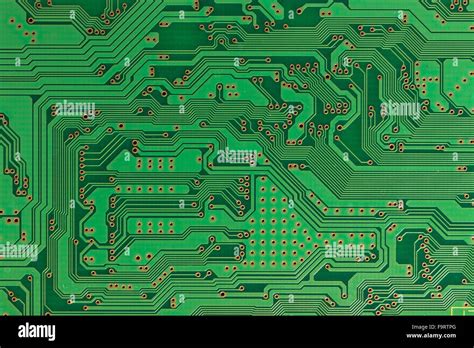
Key Applications Of Metal Core PCBs In China’s Technology Sector
Metal Core Printed Circuit Boards (MCPCBs) have become a cornerstone in the technological advancements within China’s burgeoning technology sector. These specialized PCBs, characterized by their metal core, typically aluminum or copper, offer superior thermal management compared to traditional fiberglass-based boards. This unique property makes them indispensable in applications where heat dissipation is critical. As China continues to assert its dominance in the global technology market, the utilization of MCPCBs has expanded across various industries, each leveraging the benefits of these advanced materials to enhance performance and reliability.
One of the primary applications of metal core PCBs in China is in the LED lighting industry.
The demand for energy-efficient lighting solutions has surged, driven by both domestic needs and international export opportunities. MCPCBs are particularly suited for LED applications due to their excellent heat dissipation capabilities, which are crucial for maintaining the longevity and efficiency of LED lights. By effectively managing the heat generated by high-power LEDs, these boards help prevent thermal degradation, ensuring consistent performance and extending the lifespan of the lighting systems. Consequently, Chinese manufacturers have increasingly adopted MCPCBs in the production of LED lighting products, ranging from household bulbs to large-scale industrial lighting solutions.
In addition to lighting, the automotive industry in China has also embraced metal core PCBs, particularly in the development of electric vehicles (EVs).
As the country pushes towards greener transportation solutions, the need for efficient thermal management in EV components has become more pronounced. MCPCBs are employed in various automotive applications, including power converters, motor controllers, and battery management systems. Their ability to handle high thermal loads ensures that these critical components operate safely and efficiently, even under demanding conditions. This not only enhances the performance of electric vehicles but also contributes to their overall safety and reliability, which are paramount for consumer acceptance and regulatory compliance.
Furthermore, the telecommunications sector in China has witnessed a significant uptake of metal core PCBs, especially with the rapid deployment of 5G technology.
The infrastructure required for 5G networks, including base stations and antennas, demands components that can withstand high power levels and associated thermal stresses. MCPCBs provide the necessary thermal management to support the high-frequency operations of 5G equipment, ensuring stable and reliable communication networks. As China continues to expand its 5G infrastructure, the role of MCPCBs in facilitating this technological leap cannot be overstated.
Moreover, the renewable energy sector, particularly solar power, has also benefited from the application of metal core PCBs.
In photovoltaic systems, inverters and other power electronics are critical for converting solar energy into usable electricity. These components generate significant heat during operation, and MCPCBs are employed to manage this thermal output effectively. By maintaining optimal operating temperatures, these boards enhance the efficiency and durability of solar power systems, supporting China’s ambitious renewable energy goals.
In conclusion, the integration of metal core PCBs across various sectors in China’s technology landscape underscores their importance in modern electronic applications. From LED lighting and electric vehicles to telecommunications and renewable energy, MCPCBs provide the thermal management solutions necessary to support the country’s technological advancements. As China continues to innovate and expand its technological capabilities, the role of metal core PCBs is likely to grow, further cementing their place as a vital component in the nation’s industrial and technological development.

Innovations In Metal Core PCB Design By Chinese Manufacturers
In recent years, the landscape of printed circuit board (PCB) manufacturing has undergone significant transformation, with Chinese manufacturers at the forefront of innovation, particularly in the realm of metal core PCBs. These advancements have been driven by the increasing demand for efficient thermal management solutions in high-performance electronic applications. Metal core PCBs, which incorporate a metal substrate to dissipate heat more effectively than traditional fiberglass-based boards, have become essential in industries such as automotive, aerospace, and consumer electronics. Chinese manufacturers have leveraged their expertise and resources to push the boundaries of metal core PCB design, resulting in products that offer enhanced performance and reliability.
One of the key innovations introduced by Chinese manufacturers is the development of advanced thermal management techniques.
By utilizing materials such as aluminum and copper as the core substrate, these manufacturers have significantly improved the heat dissipation capabilities of PCBs. This is particularly crucial in applications where components generate substantial heat, such as LED lighting systems and power electronics. The use of metal cores not only helps in maintaining optimal operating temperatures but also extends the lifespan of electronic components, thereby enhancing the overall reliability of the device.
Moreover, Chinese manufacturers have made strides in refining the manufacturing processes for metal core PCBs.
Through the adoption of cutting-edge technologies such as automated precision drilling and laser cutting, they have achieved higher levels of accuracy and consistency in PCB production. This has enabled the creation of complex multilayer designs that were previously challenging to manufacture. The ability to produce multilayer metal core PCBs has opened up new possibilities for electronic design, allowing for more compact and efficient circuit layouts that can accommodate a greater number of components without compromising on performance.
In addition to advancements in thermal management and manufacturing processes, Chinese manufacturers have also focused on enhancing the electrical performance of metal core PCBs.
By optimizing the dielectric materials used in conjunction with the metal core, they have been able to reduce signal loss and improve the overall electrical conductivity of the boards. This is particularly beneficial in high-frequency applications where signal integrity is paramount. The improved electrical performance of these PCBs has made them an attractive choice for a wide range of applications, from telecommunications to industrial automation.
Furthermore, the commitment of Chinese manufacturers to research and development has played a pivotal role in driving innovation in metal core PCB design.
By investing in state-of-the-art facilities and collaborating with academic institutions and industry partners, they have been able to stay at the cutting edge of technology. This collaborative approach has facilitated the rapid prototyping and testing of new materials and designs, ensuring that Chinese manufacturers remain competitive in the global market.
In conclusion, the innovations in metal core PCB design by Chinese manufacturers have significantly advanced the capabilities of electronic devices across various industries. Through improvements in thermal management, manufacturing processes, and electrical performance, these manufacturers have set new standards for PCB design and production. As the demand for high-performance electronic solutions continues to grow, it is expected that Chinese manufacturers will continue to lead the way in developing innovative and reliable metal core PCBs that meet the evolving needs of the market.

